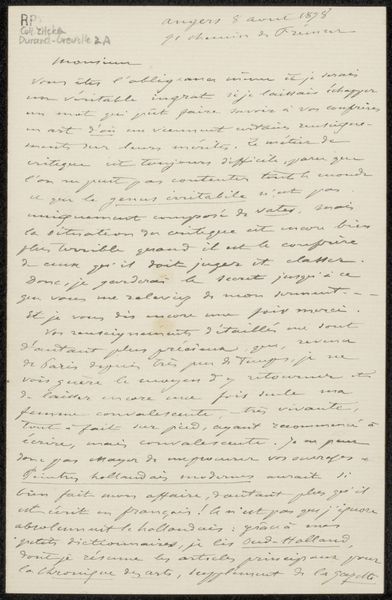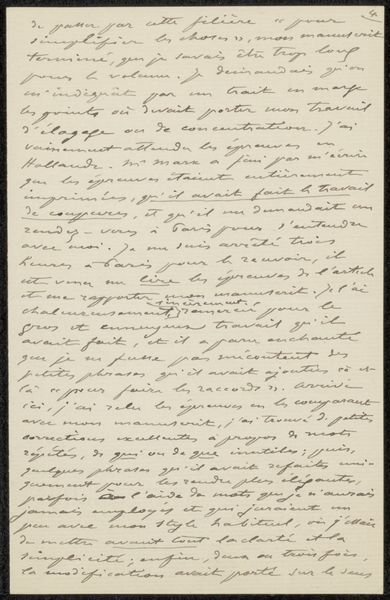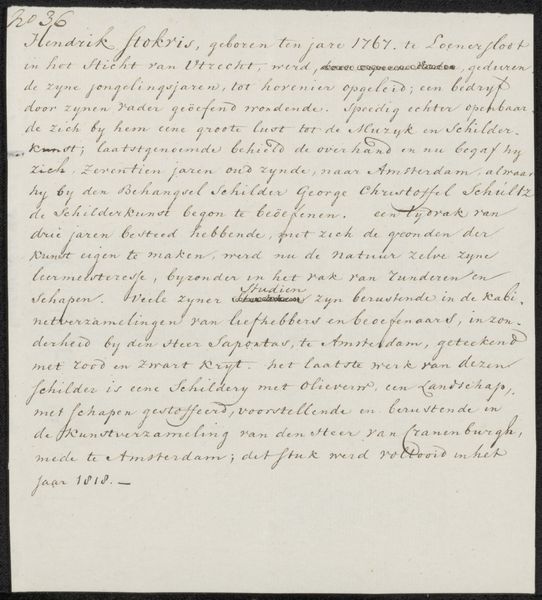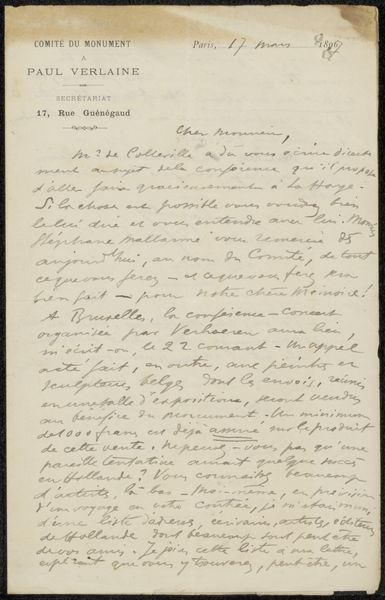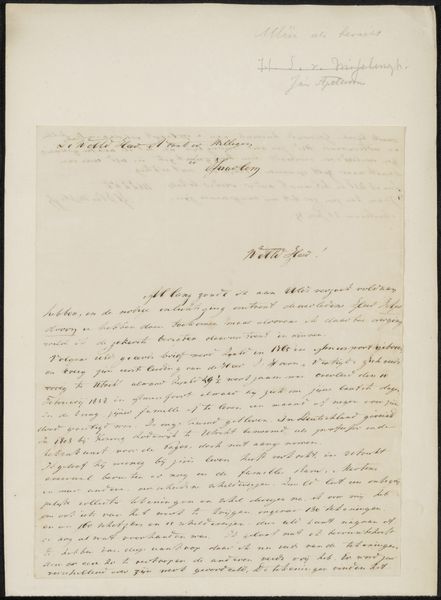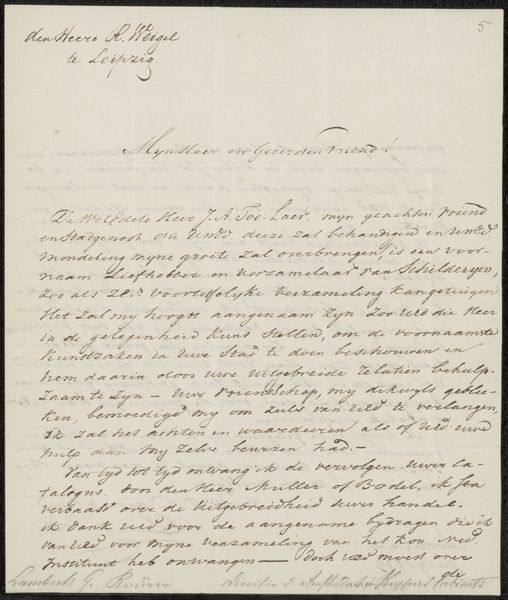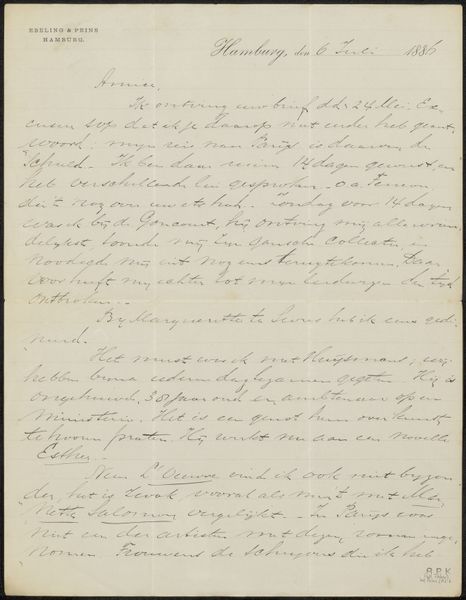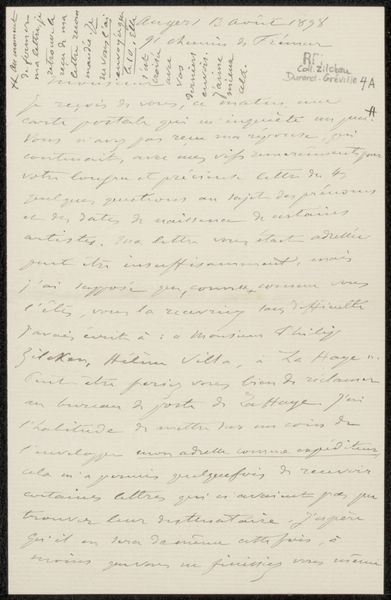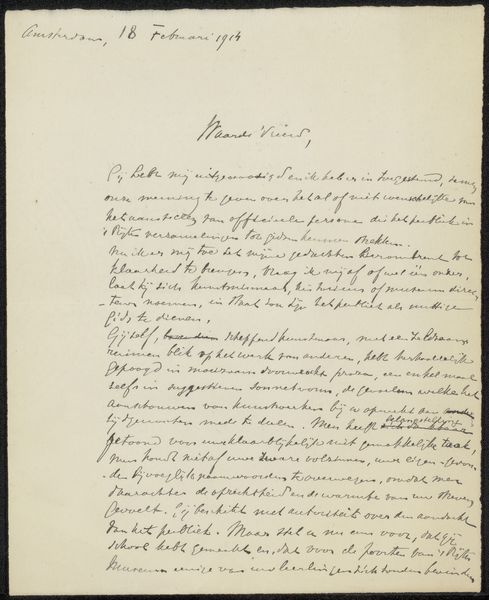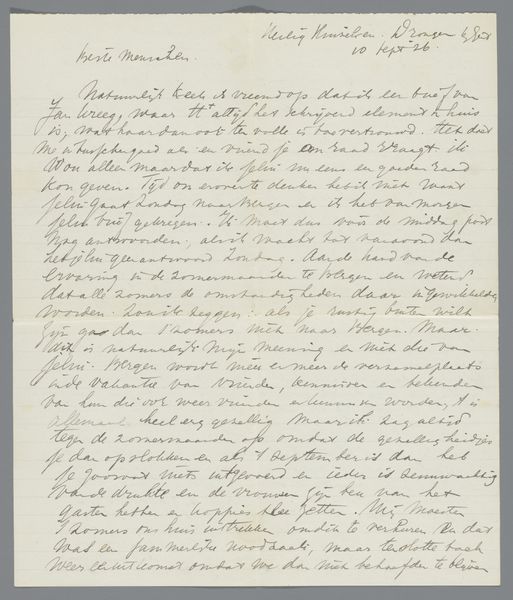
Brief van de Minister van Oorlog aan het Nederlandse leger, 1849 1849 - 1850
0:00
0:00
anonymous
Rijksmuseum
paper, ink, pen
#
paper
#
ink
#
pen
#
history-painting
#
calligraphy
Dimensions: height 330 mm, width 208 mm
Copyright: Rijks Museum: Open Domain
Editor: Here we have a piece from 1849-1850, "Letter from the Minister of War to the Dutch Army," an anonymous work made with pen, ink, and paper. The calligraphy is so prominent; the handwriting really defines the artwork, don't you think? What story can we unpack by considering the materials and methods used to make it? Curator: I see this letter not just as a historical document, but as a product of specific labor and materiality. Consider the paper – likely made by hand in this era, the ink painstakingly mixed, and the meticulous act of writing each word with a quill. These aren’t neutral acts. The careful strokes reflect a hierarchical social structure and a culture of formalized communication. It underscores a system built on authority, literally inscribed by the Minister’s hand. Does the calligraphic style, bordering on ornate, strike you as emphasizing status? Editor: It does, definitely, especially considering the letter is a military order. But wouldn't a printed notice have been easier, faster to produce and disseminate? Curator: Precisely. That very choice – opting for the laborious handwritten form – speaks volumes about power, control, and perhaps even a deliberate attempt to project an image of authority and importance. Printing might have been faster, but handwriting imparted a sense of unique authenticity, implying a direct connection between the Minister and the orders issued. And the physicality of paper and ink provides an inherent durability. This letter isn't just information; it's a carefully crafted object intended to exert influence through its very being. It embodies the government's means. Editor: I had never thought of it like that. Considering the sheer amount of time that must have been put in to inscribe that letter, its contents, and its importance are further emphasized. Thanks for that perspective! Curator: Of course. It is important to note that even something as straightforward as this letter offers multiple points for interpretation if you consider materiality and production methods, transforming a seemingly simple communication into a window into the past.
Comments
No comments
Be the first to comment and join the conversation on the ultimate creative platform.
